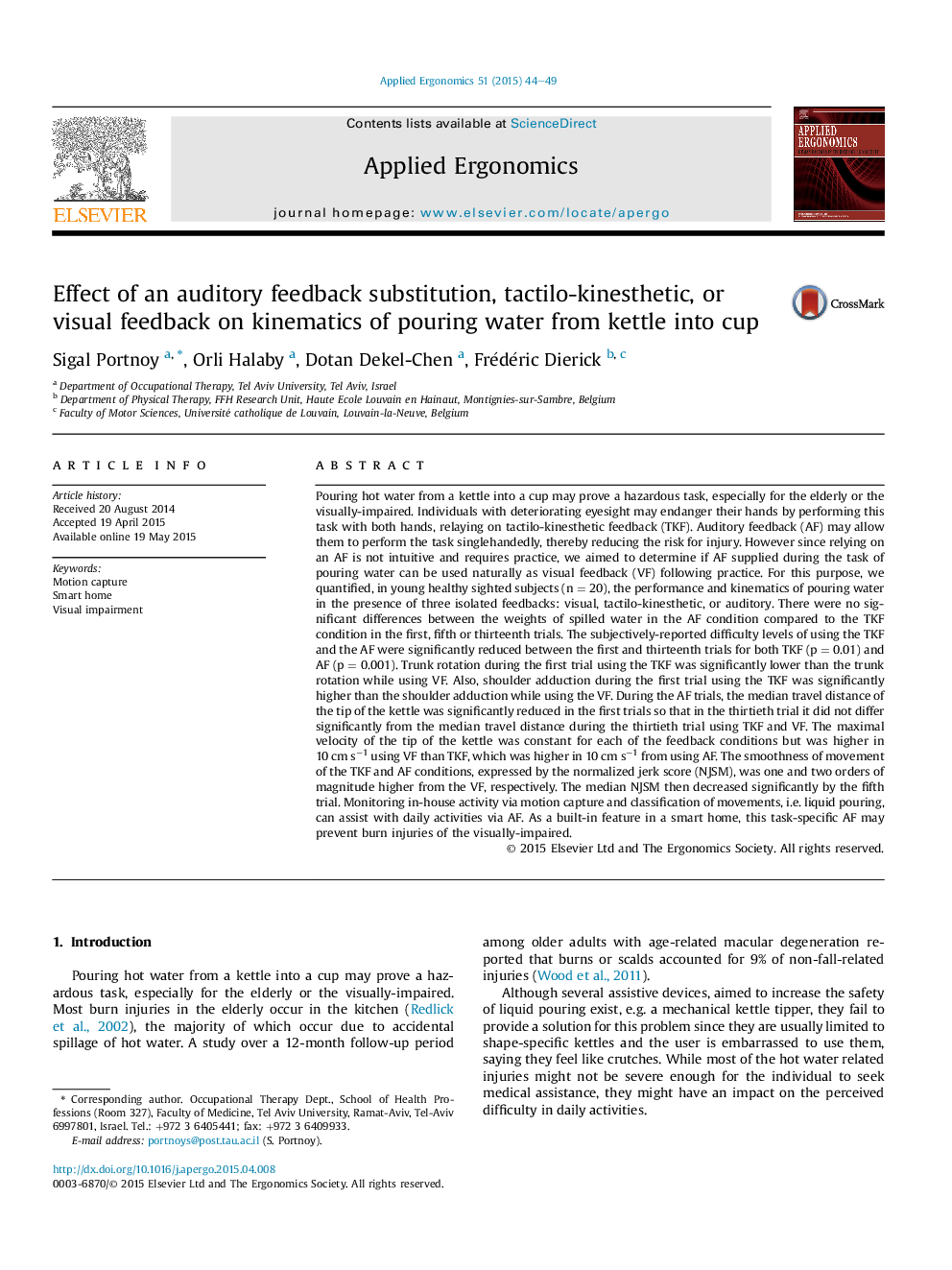| کد مقاله | کد نشریه | سال انتشار | مقاله انگلیسی | نسخه تمام متن |
|---|---|---|---|---|
| 550951 | 1450717 | 2015 | 6 صفحه PDF | دانلود رایگان |
• Motion capture provides auditory feedback during blindfolded water pouring.
• Motor learning is observed by reduced movement time, travel distance and jerk.
• Body kinematics are similar for auditory, tactile-kinesthetic or visual feedbacks.
• Auditory feedback in smart homes may prevent burn injuries of the visually-impaired.
Pouring hot water from a kettle into a cup may prove a hazardous task, especially for the elderly or the visually-impaired. Individuals with deteriorating eyesight may endanger their hands by performing this task with both hands, relaying on tactilo-kinesthetic feedback (TKF). Auditory feedback (AF) may allow them to perform the task singlehandedly, thereby reducing the risk for injury. However since relying on an AF is not intuitive and requires practice, we aimed to determine if AF supplied during the task of pouring water can be used naturally as visual feedback (VF) following practice. For this purpose, we quantified, in young healthy sighted subjects (n = 20), the performance and kinematics of pouring water in the presence of three isolated feedbacks: visual, tactilo-kinesthetic, or auditory. There were no significant differences between the weights of spilled water in the AF condition compared to the TKF condition in the first, fifth or thirteenth trials. The subjectively-reported difficulty levels of using the TKF and the AF were significantly reduced between the first and thirteenth trials for both TKF (p = 0.01) and AF (p = 0.001). Trunk rotation during the first trial using the TKF was significantly lower than the trunk rotation while using VF. Also, shoulder adduction during the first trial using the TKF was significantly higher than the shoulder adduction while using the VF. During the AF trials, the median travel distance of the tip of the kettle was significantly reduced in the first trials so that in the thirtieth trial it did not differ significantly from the median travel distance during the thirtieth trial using TKF and VF. The maximal velocity of the tip of the kettle was constant for each of the feedback conditions but was higher in 10 cm s−1 using VF than TKF, which was higher in 10 cm s−1 from using AF. The smoothness of movement of the TKF and AF conditions, expressed by the normalized jerk score (NJSM), was one and two orders of magnitude higher from the VF, respectively. The median NJSM then decreased significantly by the fifth trial. Monitoring in-house activity via motion capture and classification of movements, i.e. liquid pouring, can assist with daily activities via AF. As a built-in feature in a smart home, this task-specific AF may prevent burn injuries of the visually-impaired.
Journal: Applied Ergonomics - Volume 51, November 2015, Pages 44–49
